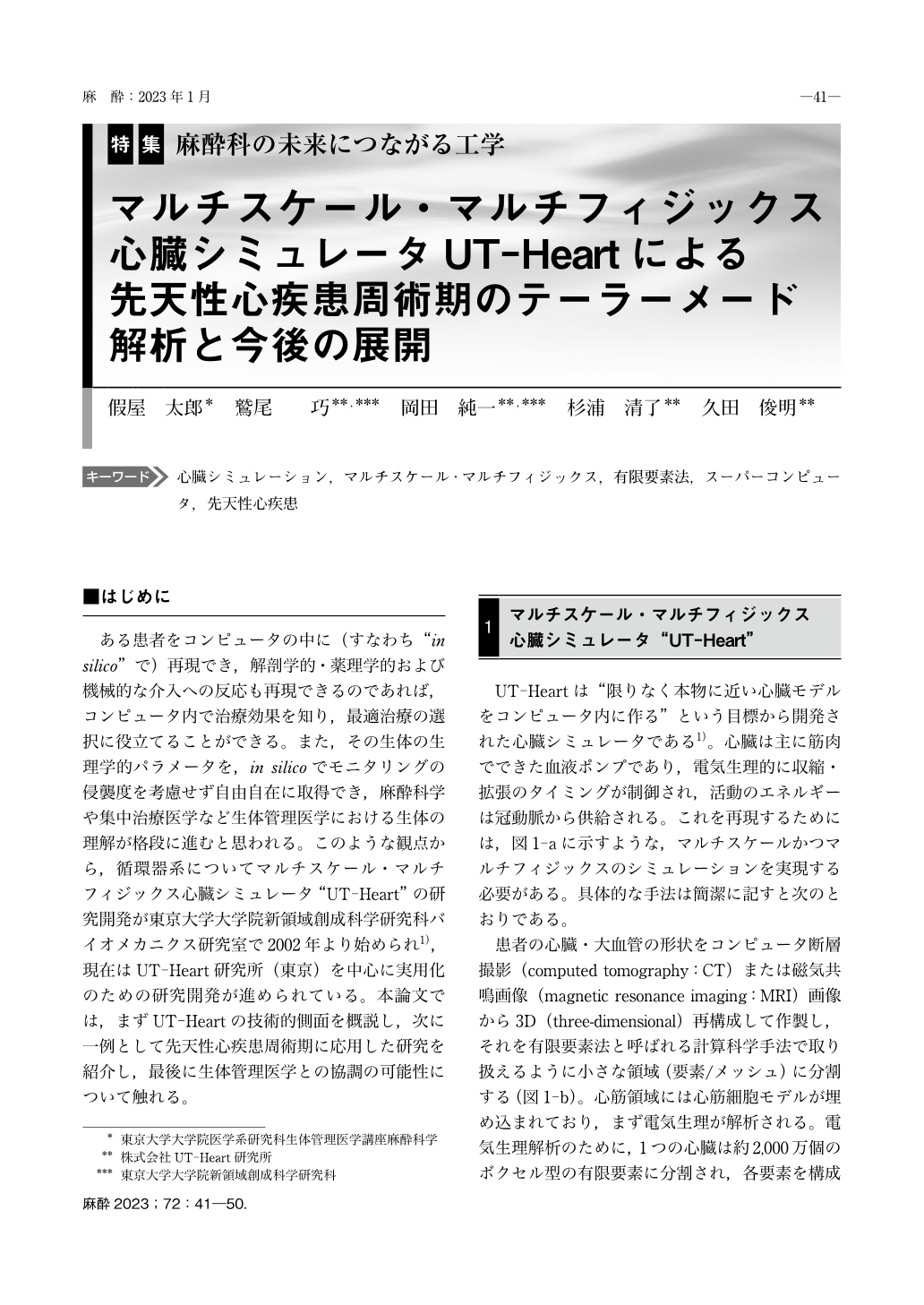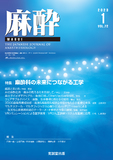Japanese
English
- 有料閲覧
- Abstract 文献概要
- 1ページ目 Look Inside
- 参考文献 Reference
はじめに
ある患者をコンピュータの中に(すなわち “in silico” で)再現でき,解剖学的・薬理学的および機械的な介入への反応も再現できるのであれば,コンピュータ内で治療効果を知り,最適治療の選択に役立てることができる。また,その生体の生理学的パラメータを,in silicoでモニタリングの侵襲度を考慮せず自由自在に取得でき,麻酔科学や集中治療医学など生体管理医学における生体の理解が格段に進むと思われる。このような観点から,循環器系についてマルチスケール・マルチフィジックス心臓シミュレータ “UT-Heart” の研究開発が東京大学大学院新領域創成科学研究科バイオメカニクス研究室で2002年より始められ1),現在はUT-Heart研究所(東京)を中心に実用化のための研究開発が進められている。本論文では,まずUT-Heartの技術的側面を概説し,次に一例として先天性心疾患周術期に応用した研究を紹介し,最後に生体管理医学との協調の可能性について触れる。
Simulating an individual patient in a computer(i.e., “in silico”)and reproducing the anatomical, pharmacological, and mechanical responses to interventions would allow us to know the effects of treatment in silico and help us choose the optimal treatment. In addition, the physiological parameters of the patient can be retrieved in silico as desired without considering the invasiveness of the monitoring procedure, which will greatly advance our understanding of the human body in “vital care medicine” including anesthesiology and intensive care medicine. From this perspective, the development of a multi-scale, multi-physics heart simulator, “UT-Heart”, was started at the Biomechanics Laboratory of Graduate School of Frontier Sciences at The University of Tokyo and is currently UT-Heart Inc. is playing the central role in its research and development for practical application. This paper first outlines the technical aspects of UT-Heart, then introduces clinical research applied to the perioperative setting of congenital heart disease, and finally discusses its potential for collaboration with vital care medicine.

Copyright © 2023 KOKUSEIDO CO., LTD. All Rights Reserved.


